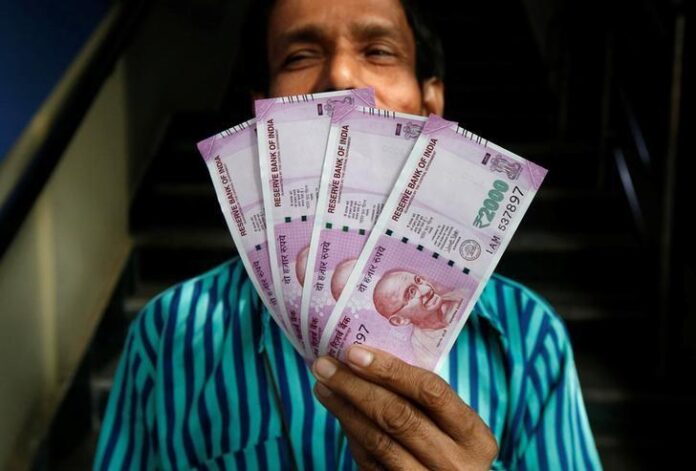The demonetization of high-value 500 and 1,000 rupee notes in India had no discernible impact on cash in circulation in the country, which has soared nearly 83% since November 8, 2016.
the supreme court ratified on Monday, January 2, the Government’s decision on demonetization.
On November 8, 2016, Prime Minister Narendra Modi announced the demonetization of the old 1,000 and 500 rupee notes. Among the objectives that, according to the Government, the measure pursued was to promote digital payments and stop the flows of black money.
However, PTI news agencyciting data from the Reserve Bank, reported that cash in circulation, in value terms, shot up from 17.74 lakh crore on November 4, 2016 to 32.42 lakh crore on December 23, 2022.
Shortly after demonetization, cash in circulation fell precipitously to a low of around Rs 9 crore on January 6, 2017, almost 50% from Rs 17.74 crore on November 4, 2016.
This was the lowest level in six years following the removal of old banknotes, which accounted for around 86% of total banknotes at the time, according to the PTI report.
Compared to January 6, 2017, cash in circulation has more than tripled, or 260%, while since November 4, 2016 there has been an increase of around 83%.
As remonetization accelerated, cash in circulation was increasing week by week, reaching 74.3% of the peak at the end of the fiscal year.
According to the report, demonetization led to a decrease in cash in circulation of approximately Rs 8,99,700 crore (as of 6 January 2017), resulting in a large increase in excess liquidity in the banking system.
However, the cash in circulation increased to Rs 32.42 crore at the end of December 23, 2022, up from Rs 31.33 crore at the end of March 31, 2022.
On November 8, 2016, Prime Minister Narendra Modi announced the demonetization of the old Rs 1,000 and Rs 500 notes.
Since demonetization, cash in circulation has increased, except for the year of demonetization. It dropped by 20.18% to Rs 13.10 crore at the end of March 2016, down from Rs 16.42 crore at the end of March 31, 2015.
In the year following demonetization, it shot up 37.67% to 18.03 lakh crore and rose 17.03% to 21.10 lakh crore at the end of March 2019 and 14.69% to 24.20 lakh crore by the end of 2020.
In the previous two years, the growth rate of cash in circulation, in value terms, was 16.77%, up to 28.26 lakh crore as of March 31, 2021, and 9.86%, up to 31, 2021. 05 lakh crore at the end of March 31, 2022.
The decision of the Supreme Court
Affirming that the decision-making process following demonetization was not flawed, the Supreme Court, in a 4-1 majority verdict, upheld the government’s 2016 decision. The majority ruling points that the measure, adopted six years ago, had a “reasonable link” with the objectives it sought to achieve and that “it is not relevant whether the objective was achieved or not”.
The court, chaired by Judge SA Nazeer, who will retire on January 4, and made up of Judges BR Gavai, BV Nagarathna, AS Bopanna and V. Ramasubramanian, has heard 58 appeals against the decision.
India’s Internet sector could be worth $5 trillion by 2030
Justice Nagarathna, however, dissented from the majority ruling on the point of the powers of the Union government under Section 26(2) of the Reserve Bank of India Act and said that the removal of the series of 500 and 1,000 rupee notes had to be done through legislation and not through notification.
“The demonetization of all series of banknotes at the request of the central government is a much more serious matter than the demonetization of specific series by the bank. So it has to be done through legislation,” he said.
In the previous two years, the growth rate of cash in circulation, in value terms, was 16.77%, up to 28.26 lakh crore as of March 31, 2021, and 9.86%, up to 31, 2021. 05 lakh crore at the end of 31 March 2022
“Parliament should have debated the demonetization law, the process should not have been done through a notification in the official gazette. Parliament cannot be left on the sidelines in a matter of such importance for the country”, he stated.
It also stated that the Reserve Bank of India did not act independently and that only its opinion was sought, which cannot be considered a “recommendation”.
Article republished from The Wire as part of an agreement between both parties to share content. Link to the original article:https://thewire.in/economy/cash-circulation-soared-83-percent-since-demonetisation














